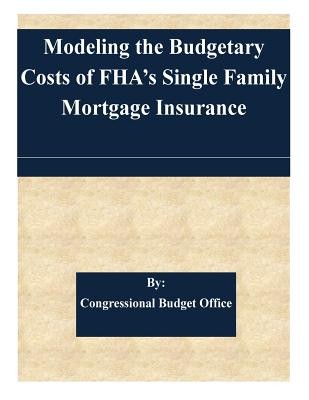
- We will send in 10–14 business days.
- Author: Congressional Budget Office
- Publisher: CreateSpace Independent Publishing Platform
- Year: 2015
- Pages: 50
- ISBN-10: 1507564899
- ISBN-13: 9781507564899
- Format: 21.6 x 28 x 0.3 cm, softcover
- Language: English
- SAVE -10% with code: EXTRA
Modeling the Budgetary Costs of FHA's Single Family Mortgage Insurance (e-book) (used book) | bookbook.eu
Reviews
Description
This book presents the simulation model that the Congressional Budget Office (CBO) uses to project the budgetary costs of the Federal Housing Administration's (FHA's) single-family mortgage insurance program. CBO simulates defaults, recoveries, and prepayments on cohorts of mortgages insured by FHA with key parameters estimated from a dataset of FHA-insured mortgages. Those simulations are used to estimate the loan guarantees' subsidy rates, which are the lifetime cost of FHA's insurance claim payments minus fees, expressed as a percentage of the original loan amounts. The simulations are also used to estimate the balance in FHA's capital reserve account, which reflects the sum of all past subsidies plus accumulated interest. As of the end of fiscal year 2013, CBO estimates that the loan guarantees issued between 1992 and 2013 contributed $3 billion to FHA's capital reserves, $73 billion less than the amount those loan guarantees would have contributed based on their originally estimated subsidy rates. That large decline is mostly the result of the downturn in the housing market that began in 2007 and the severe recession that followed. The estimates reflect a combination of realized gains and losses to date and the expected gains or losses over the remaining life of the loan guarantees, but there is considerable uncertainty about the amount of any future gains or losses. Using its model to quantify that uncertainty, CBO finds that ninety percent of the simulated lifetime contributions of those loan guarantees to the capital reserve account are between negative $28 billion and positive $26 billion. Present budgetary procedures for calculating the subsidy rates do not fully account for the cost of the risk that the government bears. If costs were projected on a fair-value basis, which more closely corresponds to the economic costs by using market prices of comparable insurance, subsidy rates would be notably higher. For example, loan guarantees for fiscal years 2014 and 2015 are projected to have a weighted average subsidy rate of negative 5.5 percent under current budgetary treatment and have a small positive subsidy rate on a fair-value basis.
- Author: Congressional Budget Office
- Publisher: CreateSpace Independent Publishing Platform
- Year: 2015
- Pages: 50
- ISBN-10: 1507564899
- ISBN-13: 9781507564899
- Format: 21.6 x 28 x 0.3 cm, softcover
- Language: English English
This book presents the simulation model that the Congressional Budget Office (CBO) uses to project the budgetary costs of the Federal Housing Administration's (FHA's) single-family mortgage insurance program. CBO simulates defaults, recoveries, and prepayments on cohorts of mortgages insured by FHA with key parameters estimated from a dataset of FHA-insured mortgages. Those simulations are used to estimate the loan guarantees' subsidy rates, which are the lifetime cost of FHA's insurance claim payments minus fees, expressed as a percentage of the original loan amounts. The simulations are also used to estimate the balance in FHA's capital reserve account, which reflects the sum of all past subsidies plus accumulated interest. As of the end of fiscal year 2013, CBO estimates that the loan guarantees issued between 1992 and 2013 contributed $3 billion to FHA's capital reserves, $73 billion less than the amount those loan guarantees would have contributed based on their originally estimated subsidy rates. That large decline is mostly the result of the downturn in the housing market that began in 2007 and the severe recession that followed. The estimates reflect a combination of realized gains and losses to date and the expected gains or losses over the remaining life of the loan guarantees, but there is considerable uncertainty about the amount of any future gains or losses. Using its model to quantify that uncertainty, CBO finds that ninety percent of the simulated lifetime contributions of those loan guarantees to the capital reserve account are between negative $28 billion and positive $26 billion. Present budgetary procedures for calculating the subsidy rates do not fully account for the cost of the risk that the government bears. If costs were projected on a fair-value basis, which more closely corresponds to the economic costs by using market prices of comparable insurance, subsidy rates would be notably higher. For example, loan guarantees for fiscal years 2014 and 2015 are projected to have a weighted average subsidy rate of negative 5.5 percent under current budgetary treatment and have a small positive subsidy rate on a fair-value basis.


Reviews